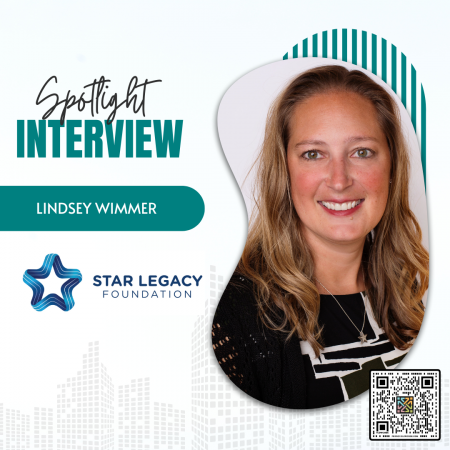
I am a pediatric nurse practitioner, and my family and I started Star Legacy Foundation after my first son was stillborn. This has provided me with the approach of taking this role from both professional and personal angles. Due to my background and after my loss I began digging into figuring out why so many stillborn and neonatal losses were happening. I had in my head, like so many others do, that these things are rare and if they happen they are a fluke, an act of God, or something genetic that we cannot fix. Once I began looking into it and realizing that was not the case for the majority of situations, it sparked an interest to figure out what’s going on and how we can do better.
Initially, we started by raising money for research studies and trying to promote Star Legacy that way; overtime, we expanded in two main areas. First, through conversations with researchers and health professionals to recognize that there was a lot of need for education; so that the research that was being done was being translated into practice easier and quicker. Secondly, as our group grew and we began talking with more families, I realized that I was very fortunate to have great bereavement support, which is not the case for many people. This pushed us to expand into family support programming because there are so many people who are falling through the gaps in getting any sort of bereavement support both in the healthcare setting and within their community.
Short-term we want to make sure to continue our current programming. The overarching goal for all of our efforts is that we want to reduce as many perinatal losses as possible and to ensure that families have access to optimal bereavement care whenever prevention is not possible. We also do education conferences, support research studies, a lot of training for hospitals, we provide people with support groups and a support line, and we also have our peer support program where families can help each other. Our long-term goals include working to launch new initiatives, hopefully within the next few years we will help bridge the gap between the research, health professionals and the families. We work to provide more opportunities for all these groups to collaborate and contribute in all three areas. For example, in research it tends to be very siloed and researchers are prone to exist in their own little bubbles, but the practitioners that are on the floor everyday know so much about what should and could be included in these research studies, and same for the families. There is a wealth of knowledge that they have that could be very valuable; like new ideas and or approaches to care and research that can be implemented into these programs to make them much more robust.
We do a lot of evaluations; whether it’s our education or our family support programs, we are constantly asking for feedback and make sure to ask participants on a regular basis to provide evaluation data around what is helpful and what is not. This helps us understand which of our programs are missing the mark and which ones are headed in the right direction.
With all the bereavement work and families we connect with, it’s impossible to come down to one. Every single baby that we get to be a part of their family journey as they are trying to remember and honor them, it really is a privilege. It is an honor to be able to be trusted enough with some of those stories, because they are phenomenal and so special in their own ways. From other standpoints, we also have a lot of prevention efforts, so my favorite pieces on that side of things have been when providers come and say “i was always trained that this was something that was going to have to be apart of my practice, and accept that these types of losses were going to happen”; this led me to ask certain questions or change the way I respond to certain things. We cherish those moments of validation, and being able to recognize that we are making a difference, even if it is one person at a time.